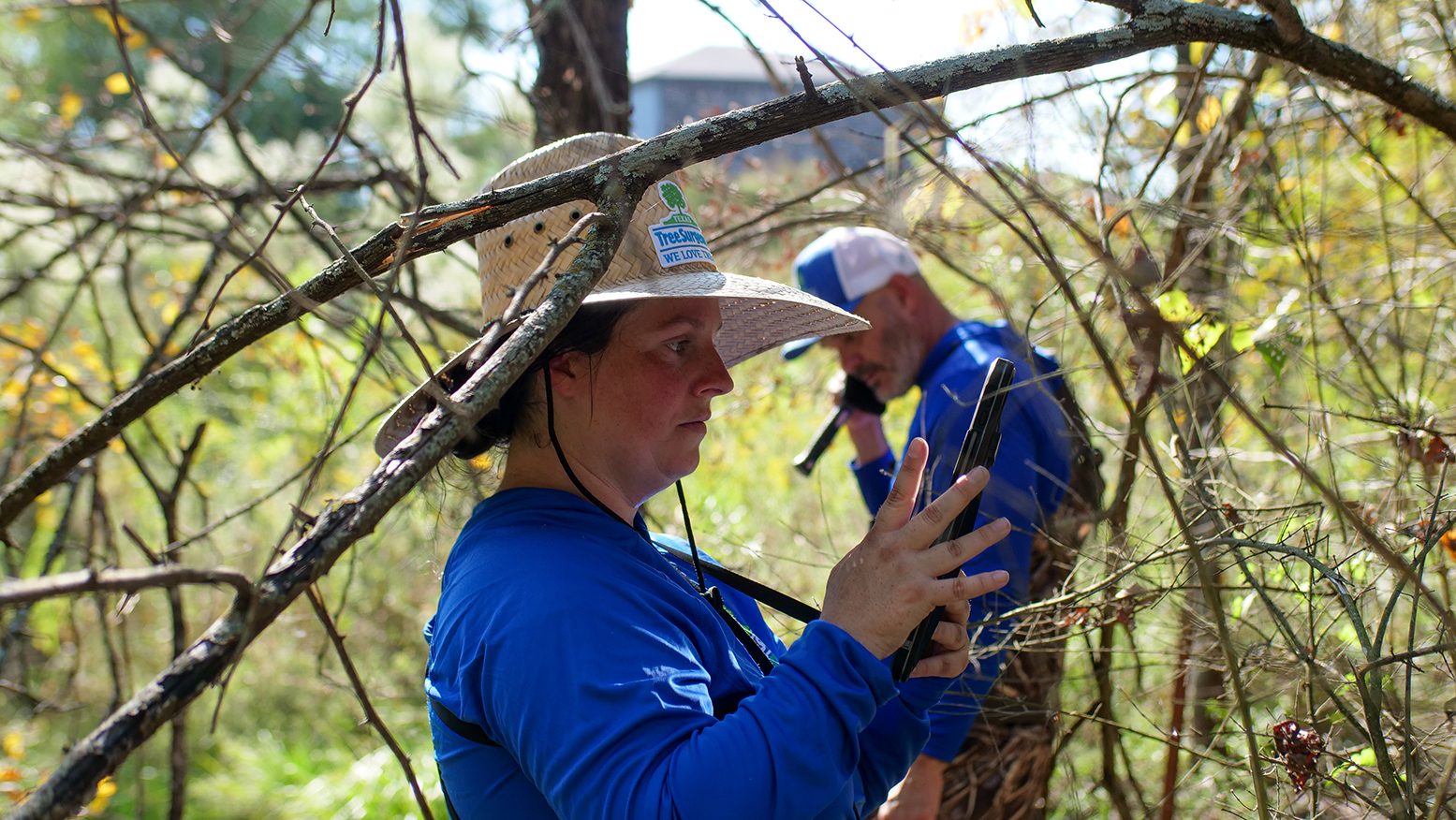Hypoxylon Canker

The last time we saw a lot of trees affected with Hypoxylon Canker was in 2012 when we had a drought.
With the 2023 drought and extreme heat that lasted for two months we are expecting to see a large increase of red oak, post oaks, aging maples, and aging hackberry trees being affected by Hypoxylon Canker now and over the next few years. Extreme or compounding stress like drought or construction damage, quickly affect red oaks and post oaks especially.
Hypoxylon Canker Red Flags
- Black spots on dead branches
- Tan spots on the trunk of my tree
- Spots on my trees with bark falling off
- Bark missing
- Spotty white stuff on tree
- Tree looks sick
- Tree is losing leaves
- Thinning canopy



All of these photos show Hypoxylon Canker in different phases and progression. At first Hypoxylon Canker shows as white-brown covered with dusty spores that come off easily. As the tree declines Hypoxylon Canker shows as gray-black old fungal matt which will be hard to the touch.
What is Hypoxylon Canker?
Fungus coexist and live naturally in all trees, it’s not until a tree becomes stressed by other factors do we see their fungal mats. Endophytes live under the bark and they are an opportunistic parasite for reproduction so when the fungus, Biscogniauxia that causes Hypoxylon Canker, sees their host as no longer a viable home it fruits so they can move onto another tree to ensure their survival. This means you do not need to worry about it spreading to other trees, all trees already have fungus.
How a Texas Tree Surgeons ISA Certified Arborist Diagnosis Hypoxylon Canker
For a local Certified Arborist Hypoxylon Canker is a common and easy fungal infection to identify. There are always compounding issues with trees with Hypoxylon Canker because Hypoxylon Canker only affects stressed trees (stress caused by an urban environment; root disturbance, over pruning, drought, heat, etc) that are losing their vigor. Signs of stress an arborist will usually see in addition to Hypoxylon Canker are boring insects, sunburn from loss of canopy, symptoms of nutrient deficiency.
How Texas Tree Surgeons Treats / Manages Hypoxylon Canker
Sadly, once a tree has become weak enough for Hypoxylon Canker to affect their health, there is nothing to do but risk management which is why it is important to use an ISA Certified and TRAQ qualified arborist. The progression of decline in the trees’ health and safety varies from tree to tree. In some trees we recommend removing infected branches to slow the progression and in others we recommend tree removal due to how much of the tree is covered or if it is on the main trunk.
What can Homeowners do to Help Their Trees with Hypoxylon Canker?
If your arborist does recommend full tree removal after a tree risk assessment please follow their advice, it is for the safety of our community and your property. If your arborist recommends branch removal, increasing overall available nutrients to the tree is the best option to help slow down the cycle of decline. Having a TDA licensed tree health care technician apply soil amendments will help your tree rebuild their energy reserves and have the energy to fight off insects and disease.
What will Happen to my Tree with Hypoxylon Canker?
Hypoxylon Canker will cause decline and eventual death of the tree. There is no cure once a tree has become this weak. A tree is considered a dangerous removal when there is a possibility of it failing with the weight of a climber and special equipment is required. We advise communicating with your home insurance for removal when property or people are at risk.
What Species are Texas Tree Surgeons Arborists Seeing this Effect?
- Red Oak
- Post Oak
- Maple
- Hackberry
- But all trees are susceptible

Weakened trees are more susceptible to disease, insects, and other pathogens. Each additional stress a tree incurs will diminish its health. Call today to schedule a consultation for an Arborist Assessment before your tree fails from Hypoxylon Canker.
Related Blogs
Similar blogs related to this topic


Top 10 Things We'd Tell You as an Arborist if We Weren't Afraid of Hurting Your Feelings
This is a list of tree care worst practices that you, or someone you know may be guilty of. Read the following list at your own risk. You’ve been warned, feelings may get hurt. 1.…
Read more

Avoid These Tree Care Mistakes for a Healthy Landscape
Below is a list of overlooked mistakes that could jeopardize the health of your trees. From missteps in pruning to incorrect watering practices, discover how to give your trees the care they deserve. Red oak…
Read more

Why do Arborists Recommend Soil Sampling in Urban Areas like Dallas?
Soil sampling is a crucial practice in urban areas like Dallas. It helps arborists make informed decisions about your landscape to ensure a healthy urban ecosystem. Our native soils vary widely—from the dense clays of…
Read more
